Marilyn Hamilton's Blog, page 48
April 22, 2017
Integral Leadership Review Interviews Marilyn Hamilton re New Book 2

4/22 – Jeannie Carlisle with Marilyn Hamilton: Integral City, Inquiry & Action
April-June 2017 / Integral Publishers’ Bookshelf
ILR’s Jeannie Carlisle interviews Marilyn Hamilton, author of the new work, Integral City Inquiry & Action: Designing Impact for the Human Hive
JC: Hello Marilyn, and welcome! In a few sentences, please describe the premise of this important new book for our readers.
MH: Integral City Inquiry & Action: Designing Impact for the Human Hive is a guidebook for placecaring and placemaking. It offers urban planners the complementary steps to the technology offered by Smart Cities and the necessary consciousness and culture related to the science of Resilient Cities. We provide 16 templates for Action Research practices that engage the 4 Voices of the city – Citizens, Civic Managers, Civil Society and Business – so they can discover Purpose, develop Visions and design the Strategies to implement both placecaring and placemaking.
JC: What inspired you to write this book?
MH: Integral City Inquiry & Action: Designing Impact for the Human Hive is Book 2 in the series of Integral City Books. Book 1, Integral City: Evolutionary Intelligences for the Human Hive introduced the 12 Intelligences that human beings at the city scale need to demonstrate as evolutionary, complex, integral systems. Readers of Book 1 asked for the manual that would help them wake up these intelligences. Since we believe in the evolutionary impulse, we felt we should test out and share the bottom-up change processes of Action Research/Learning. So, Book 2 evolved as we responded to small cities like Durant Oklahoma or whole countries like Russia’s Living Cities initiative to change 1000 cities. At the Integral Theory Conference 2015, I could see how the processes, programs and practices all fit together within an integral methodological framework (to borrow Wilber’s description) so I set out to translate that into an accessible and practical book.
For full article or download article as PDF click here.
April 6, 2017
Integral City Reflective Organ – April 2017: Prototypes for a Planet of Integral Cities

This newsletter is published quarterly using a cycle of perspectives on the Integral City viewed from: Planet, People, Place and Power. The theme of this issue is Planet.
The design for this Integral City prototype [of sustainable community development] places emphasis on the development of the people skills in sustainable communities because this approach can design in multiple experiences of team building, learning in community, and actually working for a real Community of Interest. This kind of prototyping uses aspects of action learning to offer dynamic, evolutionary, intelligent practices, tools, and frameworks that develop practitioners who can gain the capacities to build a prototype and then apply the lessons learned to build resilient communities.
Hamilton, M. (2017). Integral City Inquiry & Action: Design Impact for the Human Hive. Phoenix, AZ: Integral Publishers, p. 216
Integral City Prototypes for a Planet in Transition
People often ask me what is an Integral City or which cities are Integral Cities? My answer often seems to disappoint them, in that I say “Integral” is not an ideal for a city, but rather a framework for understanding the city as a human system in service to the wellbeing of the planet – for the purposes of evolving the city as the most complex human system yet created on our planet.
To validate the Integral City framework, we have sought opportunities for field testing. Two very different (and even unlikely) locations have emerged, who have demonstrated the intention necessary to prototype an Integral City: Durant, Oklahoma and Findhorn Foundation, Scotland.
Durant: Prototype 1
In the last 4 years, I have been working with the 4 Voices of the City of Durant, Oklahoma (Citizens, Civic Managers, Business and Civil Society) who have been prototyping the action research / action learning processes that I have outlined in my second book (see below). Durant’s entry into Integral City emergence was precipitated by two city leaders who invested in the development of their own leadership and organizational development using integrally informed practices, tools and programs.

When integrally informed leaders and organizations can make a difference in the world, a logical question, might become, “What would happen if we applied integrally designed resources and processes to the community scale that contains individuals, families, organizational work places? Is it possible to pay forward to our communities the value of integral thinking, actions, relationships and systems?” From 2013, Imagine Durant, was formed as an NGO to pursue those questions with the design team of Integral City Meshworks. Four years later, intense dialogue with the 4 Voices of the City has identified the visionary DNA that can translate into flexible strategies and designs for Durant’s future generations.
In Integral City circles, we imagine that when someone moves from the intention of scaling the scaffold of individual development to organizational development, the intention and its consequences can create a contagious activating effect that influences the spheres of influence touched by individuals investing in their horizontal and vertical development. When the leadership of individuals and organizations succeeds, inevitably witnesses to the process are inspired and they want the keys to the visible and impressive changes that they can see happening before their eyes.
Durant knows (from the Integral City Discovery Assessment) that it needs to build on its strong Individual and Collective Intelligences, and improve its Contexting, Strategic and Evolutionary Intelligences.
In Durant, the intentions of the first two leaders (Gary Batton, Chief of the Choctaw Nation and Greg Massey, President of First United Bank) now influences the Mayor, City Hall, School Board, Health Authorities, Chamber of Commerce, Industrial Authority, Arts Associations, Boys and Girls Club, Faith Community and a wide variety of citizens. The prototype of engaging and empowering the 4 Voices of Durant to co-create a shared vision has enabled the potential for an organic resilience resulting from people growing their city together.
Findhorn: Prototype 2
In the last few weeks, I have visited the Findhorn Foundation, one of the world’s first and best known eco-villages, located in northern Scotland. The Findhorn Foundation (and its related communities of Findhorn Spiritual Community, and Eco-Village at the Park), may offer a second prototype for an Integral City – following a very different path than Durant – but perhaps arriving at a similar destination. The history of the Findhorn Foundation stems from the intentions of three co-founders (Eileen and Peter Caddy and Dorothy MacLean) who found themselves unexpectedly “homeless and jobless” in a caravan on the dunes of Findhorn bay in the early 1960’s. With a combination of practical, organizational and spiritual prowess, the co-founders developed food-producing gardens from the sandy desert, visions of how to work with the energies of air, soil, water and life-forms and ecological practices that resonated with people, place and planet.
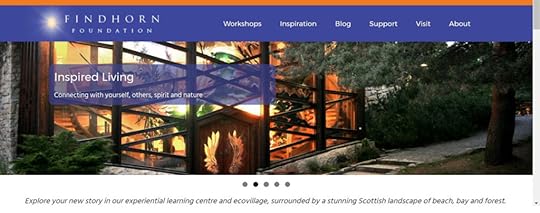
From an unlikely beginning, the Findhorn founders attracted a community who shared their commitment to live in a manner that contributed to the wellbeing of the planet. Their intentions and efforts were rewarded with garden bounty, expanding infrastructure, new forests and recognition that they had tapped into something called “Findhorn magic” that impacted residents and visitors alike. In the last forty years, Findhorn has developed educational programs, workshops and events that share their experience, practices and values for living a spiritual life in an intentional community. Thousands of residential participants attend from around the world annually and often stay for lengthy periods and/or become permanent Findhorn residents themselves.
Outliving its roots in the sixties with influences from the freedom of the hippy movement that was balanced with disciplines of a spirituality that aimed at planetary wellbeing, the Findhorn Foundation and Community matured its environmental practices with the installation of a wind turbine in the 1980’s, which was joined by three more turbines in the 2000’s. These (atypical technologies for environmental activists) enable this eco-village to not only produce its own electrical needs, but contribute energy to the grid.
The Findhorn Foundation has effectively outlived its co-founders (although Dorothy MacLean is enjoying her 97th year back in residence) and offers an ecology of residential options from community living to townhouses, private homes and holiday caravans, and also offers work that supports a local economy in ever-expanding ways. The Findhorn Foundation and community has a global reputation for sustainable community development, environmental activism and ecological restoration.
In my experience at a Findhorn Foundation workshop (Eldest Daughter Effect – see below) I learned how the residential programs contribute to managing the facility and provide expertly designed education. I enjoyed entertainments from Pantomime to hot tubs, Universal Hall Celebration of Founder Peter Caddy 100 birthday to Taizé singing , meditation to beach walks, and met many long-time residents. I learned that the Findhorn Foundation is experiencing a transition that is predictable after 50+ years of living differently than much of the rest of the world. In an informal discovery process, using Integral City’s 12 Intelligences I found that the Foundation has strong Contexting, Collective and Evolutionary Intelligences but is ready to make changes in its Individual Intelligences and Strategic Intelligences.
High and Low Roads to Prototyping
While Durant was seeking transitions that would help it grow from strong Purple (family) and Blue (order and control) capacities and early Orange (entrepreneurial) capacities into mature Orange and Green (strategic, inclusiveness and environmental) capacities, the Findhorn Foundation may be ready to transition from Green (inclusive) into Yellow (systemic) capacities, by first recalibrating Blue and Orange (ordering, structural and strategic) capacities to align with its innate Green and Purple (spiritual family) nature.
The bottom line for the Planet, is that both these prototypes offer us different starting points in smaller locations to show how the qualities of an Integral City – integral, evolutionary and living systems – expressed in the Intelligences and the Master Code – can catalyze change for the planet. Both Durant and the Findhorn Foundation are seed beds for taking care of self, others, place and planet. It is interesting to compare their histories and futures through the lenses of Integral City and see how they both have potential for expanding their Intelligences, aligning their energies and cohering their capacities.
As the old Scottish ballad suggests: “Ye take the high road, and I’ll take the low road, and I’ll get to Integral City ‘afore you!” But whether we take a high road (like the Findhorn Foundation has attempted against the odds for a half a century) or take the low road (like Durant is formulating now), these two lively prototypes show us that the intention of early initiators can create more than one sphere of influence that opens the doors of community to living as an Integral City.
Weak Signals = Strong Warning for Wellbeing of Planet
In the last month, 2 news reports reveal what complexity science refers to as “weak signals”. They are early warning signs that Gaia, the planet as we know her, is changing around us.
Climate change deniers and climate change activists have long pointed to receding glaciers as indicators (or not) of climate warming. While statistics vary from year to year, trends are often hard to document. But seeing many glaciers across the world in then and now photos can make a convincing case that glaciers are indeed contracting at a relentless rate. Glacier retreat appears to mark the onset of a self-accelerating cycle, where first causes (climate change) can become part of an endless loop of change (where receding glaciers accelerate the climate change itself). For a visual record, check out this photo documentary here: Glaciers in Retreat
Likewise, several species of bees – the most intelligent of the invertebrates and inspirators of Integral City as the Human Hive – have made a list that no life form wishes to attain – namely the endangered species list. As more research on bee health as been published, the warnings of bee decline should not just be apprehended as a threat to the $90 billion worth of annual agricultural production they enable (resulting from pollination), but a strong indicator that synergistic effects may be causing Colony Collapse Disorder. The impact of multiple small contributors to bee health appears not to be just additive but is synergistic. In other words, the interaction of factors with apparently minute and benign effects when they are considered individually, become exponentially influential with unintended consequences when they combine, to produce lethal outcomes. Mark Winston explores this little-recognized synergistic syndrome in his book Bee Time.
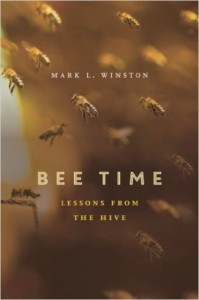
The stability of glaciers and bees may seem like remote indicators for the health of the human hive, but they both give us readings on 3 of our Integral City Contexting Intelligences – Ecosphere, Emergent and Living Intelligences. We should pay very close attention to their messages respecting the wellbeing of Gaia’s life, as it is inextricably fundamental to respecting our own. (Take action and plan to attend the 2019 Climate Change Conference at Findhorn below.)
Book 2 Announcement – Integral City Inquiry and Action: Design for Impact in the Human Hive
Integral Publishers and Integral City are delighted to announce the Easter release of Book 2 in the Integral City series: Integral City Inquiry and Action: Design for Impact in the Human Hive.
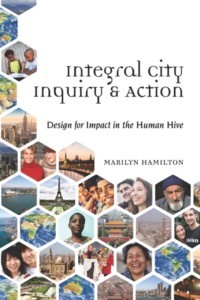
Book 2 builds on the 12 Intelligences for the Human Hive, explored in Book 1 by unpacking the application of these intelligences to designing an Integral City.
Book 2, asks: How do you inquire about, act in and impact the city as citizen, civic manager or placemaker? It leads readers as Action Researchers through a series of process, project and program designs, that integrate the consciousness and culture of Placecaring, with the actions and systems of Placemaking. Book 2 explores Integral City’s design cycles using: The Knowing Field, the Master Code, 12 City Intelligences, City Values & Vital Signs Monitors, 4 Voices, Prototyping Rapid Innovation, Meshworking People, Place and Planet, and Evaluating Outcomes. Readers and researchers may discover a linear or a non-linear path to optimize impact or chart a grand tour. In any case, they will find an inquiry-action-impact system that is replicable, frequently iterative and provides a framework for enacting deep change in the human hive.
Book 2 is designed for 2 audiences: the city planner who wants to take their practise into an integral frame and Integralists who want to expand their application of integral frames into the city scale.
Here is what 2 Reviewers (representing both city planners and Integralists) have to say about the book:
The unusual and captivating hero of this book is the city. Not an inert mass of buildings, but a collective, a hive, a holarchy that brings people and processes of inquiry together in action. This human centered approach to systems of a city offers …tons of great questions and grounded frameworks … It’s a resource for action researchers in the field of urban planning and perhaps for all whole systems/integration oriented professionals. Hilary Bradbury, Ph.D., Professor (OHSU), Editor Handbook of Action Research & Action Research Journal, Convener, AR+.
After urban planning, what’s plan B? Given the scale, complexity and interdependencies of our global crises, 20th century urban plans and solutions are simply inadequate. This leading edge and thoroughly practical contribution to inquiry and impact on the crucial dilemmas faced by cities today, is a gift to next generation urban change workers. It’s elegant and accessible structure, fresh models and integrating tools are the product of iterative testing over many years in contexts of place-based yet globally shared challenges faced by 21st century architects, planners, city managers, developers, designers, communities, investors and activists. Lisa Norton, Professor of Design Leadership and Associate Dean, School of Design Strategies, Parsons School of Design, New York, NY
Upcoming Integral City Events with Planetary Purpose
May 9-11, 2017 Collective Impact 3.0, Tamarack Institute, Kitchener Ontario.

Collective Impact (CI) 3.0 is a three-day intensive workshop for practitioners in early stage, mid stage and later stage community change work. The workshop will explore the latest in the practice of collective impact from experts, practitioners and early adopters of the work.
Marilyn Hamilton & Kara Byrd will facilitate a workshop on Imagine Durant: Place Caring & Place Making in the Human Hive. This Workshop will share how Imagine Durant (Oklahoma) used 3 integral City frameworks to integrate the 4 quadrants for the development of Durant’s Quality of Life; 4 Voices to engage the whole city (Citizen, Civic Managers, Civil Society and Business); and 4 Scales of Complexity to move from inquiry to action and impact in creating a unified Vision.
October 2-6, 2017, We-Space Online Summit

The Integral City Corp Team will join over one hundred other invited guests and contributors to the emerging field of We-Space. The Summit 2017 will showcase our respective collective practices to a growing global audience. For the purposes of this Summit, the term “We-Space” is being invoked as a constellating term for emerging collective forms of wisdom-based practice that are centralized around the project of waking up, evolving and transforming our consciousness and lives collectively.
Summit convenors envision this will be an opportunity for Integral City and other contributors to play a role in catalyzing the greater emerging global conversation, by opening up a generative space to share our discernment, insights, learning, curiosity and love for working with shared processes.
Organized thematically with five days of consecutive panels and interviews, the We-Space
Summit is being developed as an online event that will reach several 100,000 listeners
internationally.
This event is being positioned as a collective catalyst for helping the greater we-practice, we-space culture to ignite change and fresh inroads into our understanding of collective living, development and awakening at this time.
Mark your calendar and stay tuned for further details in future media releases.
November 20-24, 2017 (tentative) City Conference, Reus, Spain
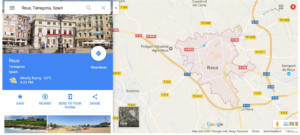
Early discussions are underway for Integral City to headline a city conference in Reus, Tarragona Spain. This will be an opportunity to explore capacity building in both cities and their eco-regions in a part of Catalonia, Spain with an interesting history of relationships between cities, autonomous regions, nation and planet. We will update you with more information in future media releases.
April 20-26, 2019, Climate Change & Consciousness: Our Legacy for the Earth
This summit will be held at the Findhorn Foundation, North Scotland. The event will feature some of the clearest and most passionate voices for the Earth ever gathered together in one place. Over the next two years as the Findhorn Foundation counts down to the conference, they will post informative and inspiring articles and videos featuring the work of presenters and other climate change activists around the world. You are invited to join and support the event by following posts and updates. Get the full details here.
Good Reads for Planetary Impact with Youth, Women and Cities
The Loving Classroom: The World is a Better Place with You in It by David Geffen. This book offers the curriculum design for developing a world of good relationships in 8 Lessons. The core capacities of respect, compassion and care (central to practising the Master Code) are outlined for young children and youth. It is being used in Israel and Palestine with aspirations for a viral spread around the world as a positive change catalyst. Find out how Head, Heart and Hand all play a role and find the book and many more resources from Loving Classroom.com
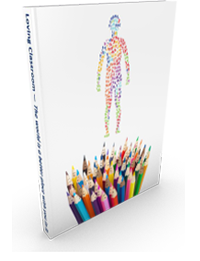
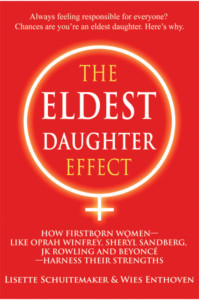
The Eldest Daughter Effect by Lisette Schuitemaker and Wies Enthoven. This book explores the family of origin and life path of women born as eldest daughters. The authors, as eldest daughters share stories and great insights into many women leaders who just happen to be eldest daughters (consider Theresa May, Angela Merkel, Christine Lagarde, Sheryl Sandberg, J.K. Rowling, Oprah Winfrey, Hilary Clinton +++) and explains the qualities that they share: responsible, dutiful, thoughtful, hands-on, caring. The first workshop on the Eldest Daughter was held in March 2017 at Findhorn Foundation (to great acclaim). A second offering in 2018 is planned. Find out more here (and order the book).
Urban Hub 1: Smart Sustainable Thrivable Cities by Paul van Schaik, co-founder of Integral Without Borders. This book explores in graphic form the integral frameworks of the urban fabric, including the contributions from Integral City.
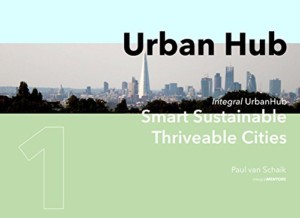
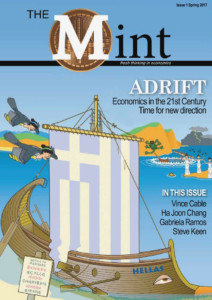
The MINT magazine, published in London, UK, by Henry Leveson-Gower and team is a new magazine, launched March 27, 2017 as a long-awaited response to the Economist. Offering fresh views that challenge assumptions about markets, sustainability and the roles of the usual suspects as actors in globalization, currency valuations and the emergence of healthy economies, its initial issue offers long-overdue provocations to re-think the world of (metabolic) exchange. Published in paper and online, find the online link here. And watch for their occasional Blog here.
Celebrating Planet-of-Cities in the Coming Quarter of 2017
We began as a mineral. We emerged into plant life, and into the animal state, and then into being human and always we have forgotten our former state; except in early spring when we slightly recall being green again. Rumi
March 21 marked the start of what Integral City calls the Planet Quarter (from March 21 to June 20). What support and gifts from our planet do you most value that nurture and support our Planet of Cities at this time of year? What planetary activists, heroes and warriors inspire you? We notice the clash of cultures from around the planet that ripple through our cities are making us ever more aware that we are interconnected across national, cultural and geographic boundaries. Visit us on the our Integral City Website and Blog or post a comment about your city interests on our Facebook page.
Meshful Blessings for our Planet of Cities from
Marilyn Hamilton and the Integral City Constellation Corps Team
PS Here are some FREE resources for nurturing our Planet and the Human Hive:
Integral City MetaBlog 2016 – A synthesis and index of all Integral City Blogs from 2016.
City of the Year 2016 – Fort McMurray – for the fire in its city spirit as it lived the Master Code
Meshworker of the Year Award 2016 – Morel Fourman & Gaiasoft for work in Future Cities Africa
The Personal and Universal Experience of Grief – a Series of Blogs
Circles of Compassion Seize the Day, Size the World
Blessings of Grief: Darkness & Dissonance
Surviving Identity Crisis with Buoyancy of Care
Adapt: Re-calibrate. Re-story. Re-work. Re-act. Swarm
Rediscovering Aliveness from Grieving: The Third Win
March 9, 2017
Rediscovering Aliveness from Grieving: The Third Win
Aliveness requires three processes: surviving, connecting to my environment and regenerating. Grief has a way of interfering in the practice of all three activities that make aliveness feel no longer attainable and seemingly not winnable.

But grief also calls forth a recovery process that uses the relationship between these three practices like a scaffold that leads from a feeling of deepest despair back to the feeling of fully alive. Each rung on the scaffold brings a new win of protection, promise and potentiality.
Paying attention to the basics of survival protects me from the impact of threats that changing life conditions bring. Surviving helps me focus in a very self-centered way on the most simple requirements of life.
Expanding my focus to the environment that contains me, expands my view from self-centred to include others and place. Connecting helps me take actions that can prevent further emotional (if not physical, social or cultural) losses and threats. Connecting offers new promise as it expands my horizons of time, space and moral influence beyond the tight world of merely surviving.
When I have my feet more firmly on the rung of connecting to my environment, eventually I relax into a perspective that admits the potential for a greater energy to emerge.
When I am in my circles of compassion, I am like a seed blown from the rocky ground of grief into the soil of care. Perhaps it is my own tears, witnessed by the tears of others who understand, that usher in a new season of possibility? Like spring rains upon the garden? Or maybe it is just the darkness of the soil that gives comfort to the seed to allow inner change to percolate through my being without the pressures of “regular life”?
Whatever the case, after an eternity in the darkness, one morning, I am surprised to awaken and want something more than simple surviving, staying locked in the soil, or even sharing space with friends. I notice this experience of grief has softened my heart and slowed down time, given me new eyes to appreciate the simple pleasure of feeling the sun warm the soil, and to see neighbours who suffer illness with new patience and compassion. But now I get flashes of a different energy. My concentration increases both in intensity and for longer periods of time. I want to rearrange – even restructure my space. Try a different recipe. Suggest a new training design. Offer a story with a surprising twist. I realize the impulse of regeneration is pushing me out of the underground of grief back into the sunlight of the larger world.
I venture a quiet smile. I almost feel fully alive again. Surviving. Connecting with my environment. Regenerating! Is it possible I have finally found the third win of Aliveness?
March 7, 2017
Adapt: Re-calibrate. Re-story. Re-work. Re-act. Swarm
If the first injunction of aliveness is to survive, the second is to “connect with my environment”. Survival may seem like a one-person job, but that is mere illusion – for I survive in an ecology of relationships, actions, structures and infrastructures and nature herself.

This “I/me/mine” depends on right behaviours, responding to cultures and engaging in the social rules, regulations and laws of the We/It/Its of reality in which “I” am embedded.
Ironically, I am discovering that my former identity “wife” connected to her environment differently than this new identity “widow”. “Widow” engages the environment both inside and outside the door of the household with assumptions that have transformed with a finality that startles. Cooking for one not two. Cleaning for one not two. Washing for one not two. Most daily acts of household management require half the time and half the resources. But they also require only my energy and my time. The burden of lifting has now doubled.
At the same time, this former “wife’s” act of caring for her partner has disappeared in a flash. The “widow” finds the garden of caring for another has been plowed under. Has the weather, the seasons, the interactions of care ceased? Or is the garden of care just lying fallow until “widow” finds new seeds to plant, plants to nurture and harvests to enjoy?
As “widow” stretches back out to the world of work, this old familiar environment has also taken on new aspects. Whereas “wife” negotiated work, based on time/space/moral decisions in conjunction with partner, now “widow” discovers engaging with purpose, passion and priorities impacts collegial agreements, client contracts, creative outputs and a variety of geographies. It is now all mine alone to conclude. This is both a powerful responsibility and a lonely freedom.
It is a disorienting feeling to sense the basic elements of my environment are much the same, but my relationship to them has changed. Because I have changed both on the inside of my self perception and on the outside with others’ perception of me. Those self-centered changes mean the environment calls forth a whole series of recalibrations.
Maybe this is how honeybees feel when they swarm from their old hive to find a new one? Moving their chief “identifier”, the queen, along with the whole family and home (hive) to a new location? That natural act certainly requires fundamental adaptation to a new environment. But it also taps into the deep-time intelligence of the bees themselves. They can be successful in this adaptation because they re-member how to do this not just as individuals or even the hive but as a species.
I find, recalibrating from “wife” to “widow” is a strange sort of metamorphosis – perhaps because I am focusing on the experience as mere individual? Now I see that it requires repositioning my very aliveness in terms of adapting to many layers and perspectives of life in my environment. But, while re-positioning involves re-storying myself (identity), re-structuring my space/time, re-working my passions and purpose and re-acting to old expectations in new ways, it also taps into an environment full of “human hives” who support me as I work through the process.
Luckily, these hives are populated with companions who re-mind me that this tumultuous and turbulent process of adapting will, in its own time/space bring renewal. I am re-assured I can begin a new cycle of aliveness in a new environment to which I will connect in a multitude of ways that I learn from the wisdom of the environment itself.
March 5, 2017
Surviving Identity Crisis with Buoyancy of Care
When we lose a companion from our lives, the shock or grief can disconnect us from our very sense of self. My husband’s recent passing, raised many questions. Who am I without this person? How do I fill this “spouse-shaped” space within me? How does daily life continue without him? How do I survive without this partner?

There I have it. My own identity and perhaps my very survival is in question. That is a shadow of change I somehow didn’t see coming.
Perhaps this blindness to such shifts in my fundamental sense of self arose because his survival of chronic illness had become intertwined over a long time with my own survival and evolving identity as a caregiver? Caregiver was an identity that I assumed reluctantly and only came to appreciate as an “ashram of compassion” that could expand my very underdeveloped capacities for compassion. That was an unexpected gift to me who so deeply desires to honour and live by the Master Code: To care for self, others, place and planet.
Now I remember that this kind of deep caring is intimately bound with our very sense of aliveness. And I recall the first quality of “aliveness” is the ability to survive. With my partner over 40 years, I had figured that out – both in health and in sickness. I had a life. He had a life. And we had a life together.
But now that he is gone, two parts of that equation have disappeared – his life and our life together.
I wasn’t prepared for the impact that would have on the first part of that equation – my life, and my identity. These profoundly personal losses of relationship call me to redefine my very identity – and in doing so ripple through my every capacity to live the Master Code.
My loss and my grief have downsized my world. The tension between who I was before the loss and who I am now and who I may become is dissonant and stressful. Do I feel the roots of what could become a vicious circle? Stress can destroy capacity – not just the capacity to survive myself, but the ability to support and care for others, place and planet. I feel myself downshifting the size of the world I can care for – just to survive.
At the same time my identity feels assailed on a sea of doubt. It would be easier to sink out of sight and withdraw from my commitment to aliveness. I catch my breath at that prospect. Finding a new sense of identity that can float on this sea (of doubt, stress or misgivings) calls for a buoyancy that I am not sure I can supply myself.
But the miracle of the Master Code, is that others in my environments of place and planet are strong enough to throw me the life preservers of care. Some days they are the flotation devices of meals or walks. Other days of visits and entertainment. When I am stronger of conversation and dialogue. And when I can keep my head above water the life preserver even looks like a mirror of reflection.
Slowly a new sense of identity for my life is emerging. Now I can catch glimpses of a new self. With different relationships to others. And those relationships are changing my relationships to place and planet. I am observing these opportunities are not just about my self-survival of an identity crisis but nurturing gifts for growing generative relationships together.
They inspire me to hope that in the not too distant future my own buoyancy capacities will be restored so that I can become a caring flotation device for others (and then place and planet).
February 26, 2017
Blessings of Grief: Darkness & Dissonance
The experience of grief is deeply personal. It is so all consuming, that the world shrinks to a very self-centered size. But the experience of grief is also universal.

No consciousness nor culture is untouched by it. Pet owners know that not only do they grieve for lost pets, but pets – like apparently all mammals (if not all animals) – grieve too.
The experience of loss is a learning experience.
After my husband passed in January, I enrolled in a Grief Class offered by my (traditional Christian) church. I was quite shocked that the first class gave us homework to compile a “grief inventory”. This seemed at first impression to be a mere gateway to self-pity. Staring darkness in the face. Wallowing in not just my current very real pain, but welcoming a whole lineage of grief into my awareness.
With these misgivings, I nevertheless started the entries. Big losses were easy to mark down. Mother’s death. Father’s death. Brother’s death. Divorce. But then I thought of friends who had passed. Grandparents, aunts, uncles, neighbours, colleagues. As I apprehended, the list started to become legion. Breathing became constricted. The space around my heart ached. I put my pen down.
I looked away from this crowd of significant relationships for some days. Then someone or something reminded me to consider losses of my homes, jobs, bosses, organizations, businesses, associations, playgrounds, parks, forests, streams, beaches. Even losses of neighborhoods and cities that had been vacated or merged into other entities. I found myself gagging. I put my pen down.
A few more days passed. Then the news media reminded me of many wider territories of grief and deeper zones of trouble. This touched off an avalanche losses remembered from destruction, war, terrorism, disease, epidemics, disasters (both from Nature and Man), robbery, theft, assault. I choked. I stopped writing.
I wanted to close the door to the overwhelm I felt from fear and just withdraw into my cave. I sorrowed for lost dreams, aspirations, dashed expectations, thwarted attempts to grow, missed opportunities.
I longed to cease recall from this flood of losses and stop this inventory of pain, dark emotions and surges of guilt. I wanted to flee and just stop this whole exercise of self-centred indulgence.
But then I started to consider another part of the exercise. When had these losses occurred? Where was I when they happened? Who else was with me? What had these losses meant to me? What had they taught me? Where had I experienced them in my body? How had I resolved them? Who or what had helped me bring closure?
When I looked over the litany of losses, did I notice patterns of response? Had all the scars healed? Was my stack of losses an unending tower of grief that would progressively overwhelm me? Or were some losses finished? Put to bed? Closed? Even re-storied?
This line of inquiry made me curious. I began not just to see that grief and loss are inevitable in life but to feel that reality deeply. My life cannot escape loss because it “comes with the territory” of living. It is how I survive loss that enables me to emerge from the dark back into the light.
In this dim awakening, I recognize the shapes of grief and loss as dissonances. Each loss changes the world as I know it. Some strength, opportunity, asset or resource (or combination thereof) has been changed, threatened, damaged or killed. Where I have experienced a similar loss before and resolved the dissonance then I have added to my store of resilience. If the loss is new or more severe, I may not have the resilience to easily resolve it. I may not even know I don’t know: what to do, how to understand, who to ask or where to re-organize? How to survive in these new life conditions may be completely unknown to me.
A support group like a Grief or Loss Class might be a good place to start. It might help me find that my patterns for responding to loss and grief have become embedded in my character. Some patterns are healing and wholing. Some scars still pain when new losses arise.
So, what a blessing, that I remember that I do not have a monopoly on the experience of grief and loss – or how compassionately to respond to it. The universal response to loss and grief, seems quite embedded in human nature. This capacity just seems naturally to arise out of the Circles of Compassion that embrace me.
They remind me, that even with the loss of my husband, I am still here to record this inventory. That bit of evidence reflects some capacities remain to buoy me up. And now that I notice the loss and grief are old friends in my patterns of resolving dissonance, I recognize them as conspirators in my journey of learning. How I resolve this deepest of griefs – especially through the Circles of Compassion – will make me as strong as my capacity to match this life condition – with its own blessings of darkness and light – that can hopefully restore and re-story me back into the larger domains of the world.
To Know the Dark
by Wendell Berry
(1934 – )
To go in the dark with a light is to know the light.
To know the dark, go dark. Go without sight,
and find that the dark, too, blooms and sings,
and is traveled by dark feet and dark wings.
February 17, 2017
Circles of Compassion Seize the Day, Size the World
2017 is moving so quickly it has been difficult for me to seize any day as it has waxed, wholed and waned. The cultural markers of New Year, Presidential Inauguration, Family Day, and Valentines have already come and gone.

Wars flare. Peace is threatened. Borders are breached.
For me the world outside my doorstep has passed in a blur because January 1 marked the final days of adventure in this world for my life partner of 40 years. My husband, Peter Dobson passed away on January 5, 2017. The impact of his passing has overwhelmed my sense of self, relationship to others, service to the world and awareness of the eternal Kosmos.
Grief has shrunk my world from horizons imagined beyond many tomorrows to the tasks of just today, and today and today.
I am learning that grief is a whole life experience. It does not limit itself to emotional outpourings, bodily weakness, or numb feelings. It insinuates itself into all the relationships of my life, all the expectations of my intentions and even into the things that populate my closets, household and workplaces. Grief is a first person, second person and third person experience that demands its own space and time.
It seems that grief has contracted my world to just the next step … the next hour … the next meal … the next day.
For someone whose energies are attracted to imagine the future, design strategies to serve long term purposes and rally the team to create new worlds, the journey of grief is a humbling experience.
Where once “Carpe Diem” was my clarion call to topple the barricades that restrained cities from changing into their evolutionary destiny as Gaia’s Reflective Organs, “Carpe Diem” has downsized itself to fit my altered capacities. “Carpe Diem” has transformed from a strident injunction into a gentle whisper that reminds me that today is enough. I realize that as the span of my capacity to hold possible futures has shrunk, so has the size of my present world.
But as it turns out, the size of the circles of compassion of my communities of location, communities of faith, communities of practice and global sanghas have been extraordinarily responsive. They have all extended their arms and expanded their reach to enclose me in a circle of care that affirms for me the magnificent Grace and deep resilience of the Master Code. While I have been challenged to care for myself, these wonderful communities have embraced me like family. Their continued capacity to practice the Master Code – to care for self, others, place and planet – is sustaining the size of the world I imagine returning to serve, when I can seize the day with circles of compassion that expand beyond myself to embrace others, place and planet.
I am deeply grateful.
December 30, 2016
Integral City Meta Blog 2016
Here is the Integral City 2016 Meta Blog. It connects the 4 Voices of the Integral City to the Planet, People, Place and Power that energized us in 2016.
It follows the traditions of:
Integral City Meta Blog 2015
Integral City Meta Blog 2014
Integral City Meta Blog 2013
1. Equinox/Solstice Newsletters – Integral City Reflective Organ
Integral City Reflective Organ – April 2016: Planet of Cities Coming into View
Integral City Reflective Organ – June 2016: Catalysts for Chance in a VUCA World
Integral City Reflective Organ – September 2016: Celebrating City Renewal
Integral City Reflective Organ – December 2016: Coalescing We-Space Power
2. City of the Year 2016: Fort McMurray

In 2016, Fort McMurray the City of Energy replaced Paris, the City of Light as City of the Year. Fort McMurray has risen again from a fire that removed the People from the Place but was unable to repress their strong attachment for the city they love. Integral City inquires if Fort McMurray can take this devastating experience and transmute Fort McMurray’s relationship to energy as a model to the planet of cities. What if the energy they produce and use can be recycled by the Earth in a sustainability cycle?
Read the City of the Year blog here.
3. Meshworkers of the Year 2016: Coalescing Future Cites Africa

Generally off the radar of troubles that too frequently marked Europe and the Middle East in 2016, cities in Africa are finding ways to mesh together through the auspices of Morel Fourman and Gaiasoft’s toolkit. They have designed an electronic platform for cities to manage strategic planning and engage multiple generations to build capacity in Kenya’s cities along with a number of other African cities.
With such success in long term meshworking we were honoured to recognize Morel Fourman and Gaiasoft as Meshworkers of the Year 2016.
Read the full story of Meshworkers of the Year 2016 here.
4. 2016 Matured Alliances for Integral City
Integral City Community of Practice participated in Ten Directions’ online course In This Together. We explored the impact of the course homework on Integral City facilitation skills in this series of blogs.
Integral City Learning Retrospective on In This Together training:
Giving attention to our intention for facilitating
Listening intently and actively
Expressing our message clearly and congruently
Recognizing the multiple points of view at the table
Questioning to understand
Embracing feeling & emotion to transmute negatives into positives
Leveraging conflict through shared intention
Giving and receiving feedback
Enjoying our facilitator role and relationships
Integral City Founder, Marilyn Hamilton joined the board of Integral Without Borders. Learn more about both organizations here:
Integral City Meshworks + Integral Without Borders = New Synergy
5. Integral City Explored Place
Through a series of blogs, we explored the Master Code, New Cities, Neo-Cities and Celebrating the City.
What Part of the Master Code is Not Working for the Human Hive?
New Cities in China
A City Without People is not a City
Building a [City] Bridge Without Walking on It
China Why Not House the Refugees in your Empty New Cities?
Burtynsky and Caemerrer Photographs Haunt Cities
ZomBees versus Zombie Cities
Neo-Cities – Considerations for Design
Are Neo-Cities Human Hives?
What are Neo-Cities Forgetting?
Neo-Civics for a Neo-City?
Celebrating the City
City Day: Why Don’t We Celebrate the Most Complex Human System?
Celebrate City as Gaia’s Reflective Organ
City Organs on Parade
Celebrating the City Has Evolutionary Impact
What Month Should Celebrate City Day?
6. Brexit Was Considered from Many Angles
The Brexit vote surprised the world – and provoked these 3 blogs.
Brexit Needs Guidance from the Edge of Inside
Brexit Morning After Intelligence from Inside the Un-United UK
Brexit Leave Vote=Gift of Death – Note from NL
7. Miscellany
You Wanted Me Back! –
This is a poetic tribute to a Member of the BC Legislature on the occasion of his speech on Canada Day.
I’ve Been Violated – Give this App to Someone You Love
Here is a short blog to support women who have been violated to link them to an app that helps them record the circumstance.
December 29, 2016
Fort McMurray – City of the Year 2016
Fort McMurray, City of Energy is city of the year 2016. Surviving the worst natural disaster in Canadian history, the city of Fort McMurray endured a fire which engulfed its structures, but not its cultures, acts of super-human persistence, nor its extraordinary human kindness. 88,000 people were safely evacuated from a fire started on May 2, 2016 and not declared under control until July 4, 2016.
While 2015 recognized Paris, City of Light as the city of the year, for its resilience in the face of human-initiated terror, threats and intimidation, 2016 is the year to recognize how Fort McMurray survived in the face of the uncontrollable power of nature unleashed on human settlement. In these 2016 circumstances the fierceness of the human spirit burned stronger that the inferno, enabling the safe evacuation of not only the whole city population, but multiple subsequent evacuations of nearby towns as they too found themselves in the pathway of flames.
From an Integral City perspective, what stands out clearly from the many stories of survival is how the 4 Voices of the City all worked together to keep each other alive, not just individually but collectively. The Fire Chief saved the homes of other neighbourhoods, even as his own home was incinerated. Citizens made sure not only that homes were vacated but that transportation was available for families to make the perilous journey out of the city. In many cases, even pets were saved and accommodated in emergency shelters. Civic Managers from multiple levels of government coordinated their efforts for optimal emergency response. The big energy corporations offered their site accommodations, airplanes and expertise to fight the fires and/or provide emergency responders. Civil Society stepped into the abyss immediately to collect and coordinate the massive relief effort that came from every corner of Canada and beyond.
In Fort McMurray 2016, living the Master Code became a way of life (taking care of self, others, place and planet simultaneously).
By stint of good management and strategic deployment of resources from city, region, multiple provinces and nations, the core infrastructure of Fort McMurray was largely saved. The scattering of Fort McMurray’s population to the four corners of Canada, reflected the heritages of the thousands of workers who had become the backbone of the energy industry centred in the city and serving a world hungry for its resources. (The fire halted a quarter of Canada’s oil production equal to 1 million barrels per day, costing Alberta alone $70 million per day.)
Ironically the Fort McMurray fire disaster, has attracted to the city its fair share of criticism as poster-child for climate-change disaster scenarios. Before the fire, the city and the tar-sands eco-region in which it sits were vilified as exemplars of non-renewable energy sources of the worst kind. Fort McMurray and the tar-sands were flashpoints for the world’s least responsible use of carbon-based fuel. They were easy targets, because the accusators tended to be players on the main stages of cities located great distances away, gulping down excesses of carbon-based energy, resisting the initiation of emissions controls or ignoring the implications of ever-expanding eco-footprints.
But now Fort McMurray can proudly represent the indomitability of the human spirit that can motivate actions for survival, connect with the environment and reinvent its own raison d’etre. For less than six months after the fire was brought under control (and even while underground fires continue to smoulder during the winter), Fort McMurray is rebuilding. All the schools are open again. Citizen-workers are returning to reconnect with a city they loved, rekindle old relationships and find new employment.
It is fair to say that before, during and after the great fire, the city of Fort McMurray was put to the test of demonstrating that survival, sustainability and resilience depend on exercising all 12 Intelligences of the Human Hive.
One intelligence remains for Fort McMurray to consider amplifying – namely Evolutionary Intelligence. For as the City of Energy, perhaps one of Fort McMurray’s greatest opportunities now, is to reinvent itself as the city who demonstrates core principles of the Natural Step.
As a sustainable Fort McMurray, our City of the Year 2016, an opportunity exists to create the perfect re-positioning for itself as the city with an energy-based economy and way of life where nature is not subject to systematically increasing …
… concentrations of substances from the earth’s crust (i.e. educating and using fossil CO2 only in ways that are balanced with earth’s ability to recycle it and preventing the accumulation of substances of heavy metals),
… concentrations of substances produced and/or accumulated by society (such as tailing ponds or chemicals used for oil and gas extraction),
… degradation by physical means (such as deforestation, soil contamination or destruction of groundwater),
… in society, structural obstacles to people’s health, influence, competence, impartiality and meaning.
Fort McMurray is Integral City of the Year 2016 for the fire in its city spirit that enabled it to survive. We hope that the same fire becomes a spark that reinvents the city as an integrally sustainable city for the future.
===
For a full story of the Fort McMurray Wildfire see Wikipedia.
For Westjet’s Surprise Christmas Gift to Fort McMurray (spoiler alert – miracles involved!)
See also Paris – City of the Year 2015.
December 28, 2016
Meshworkers of the Year Award 2016: Coalescing Future Cities Africa
Morel Fourman and his organization Gaiasoft have been working with cities and nations, for over a decade, particularly in Africa designing and implementing an electronic platform that enables strategic positioning for organizations within cities and across cities in the same country or continent.
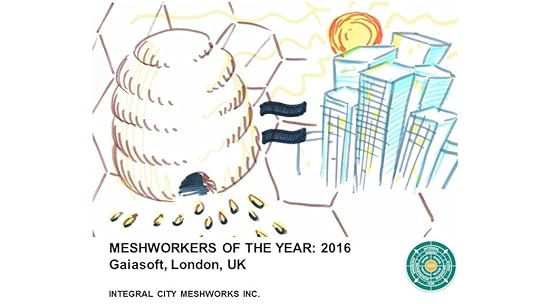
Morel’s work has provided systematic foundation building to strengthen city systems and infrastructure. He designs performance management systems that enable capacity building in the city’s four voices, particularly with governments, business and citizen engagement.
Morel has been realising a national meshwork of cities in Kenya, keeping at it for years slowly and gradually building CAPI (coalescing authority, power and influence). He has now attracted Worldbank to support meshworking throughout a number of African countries, taking them forward into Future Cities Africa.
Through Gaiasoft, Morel and his team start working to restore and/or introduce healthy capacities for management, order and good government. Gaiasoft encourages governments to listen to women’s groups and youth. Morel supports them to have an organized voice, by offering simple tools, always training local young people to deliver from the start. This impact has now spread to the MENA (Middle East and North Africa) region, Algeria and other countries.
Morel and Gaiasoft involve students through AISEC (the world’s largest youth-led network creating positive impact through personal development and
shared global experiences) supporting them to get their act together and be taken seriously. This in turn, really strengthens the voice of civil society to be an influence in communities and cities.
For Morel’s and Gaiasoft’s outstanding progress, persistence and achievements in trans-city meshworking, Integral City presents Gaiasoft the award of Meshworkers of the Year 2016.
For more on Gaiasoft and Morel’s work watch two YouTube messages of Morel’s work with Future Cities Africa
https://www.youtube.com/watch?v=SA0a25GIQjE – learning together and identifying the positive deviants
https://www.youtube.com/watch?v=Z-iD0yTm95U – every country implementing its goals linked to the whole.
===
Definition of Meshworker
A Meshworker of the Year demonstrates the meshworking intelligence as defined on the website . Meshworking intelligence creates a “meshwork” by weaving together the best of two operating systems — one that self-organizes, and one that replicates hierarchical structures. The resulting meshwork creates and aligns complex responsive structures and systems that flex and flow.
Candidates for the Meshworkers of the Year Award invest dollars, time, effort and expertise at a level of complexity that serves a whole city or cities. Here are our previous winners:
Marilyn Hamilton's Blog
- Marilyn Hamilton's profile
- 3 followers



